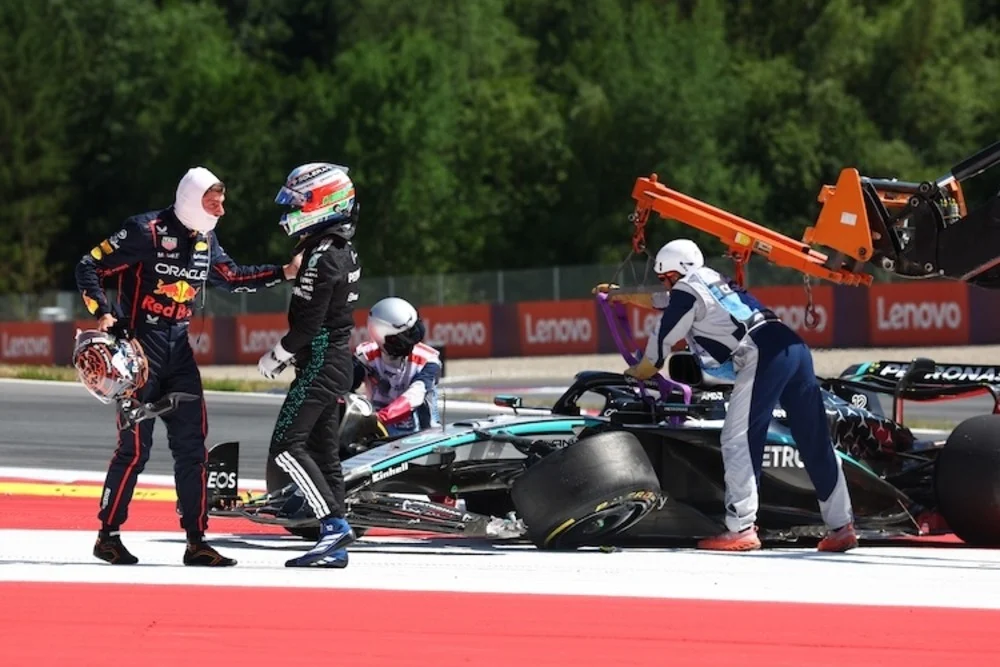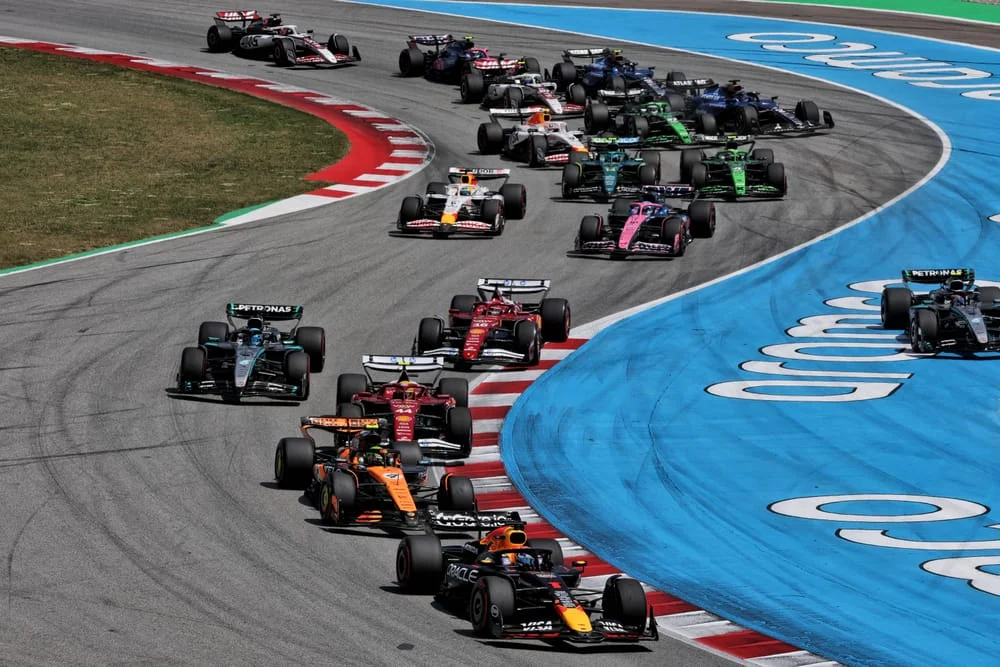The FIA announced a comprehensive set of new technical regulations that will redefine the Formula One World Championship starting 2026 F1.
The highly anticipated new technical regulations, which will bring about perhaps the most latest major change to Formula 1 starting 2026, were finally officially announced by the FIA just ahead of the Canadian Grand Prix in Montreal.
The release which was presided by FIA President Mohamed Ben Sulayem, was hailed as a groundbreaking development for the sport. The change is headlined by the introduction of new 1.6-liter V6 hybrid engines that will rely more on electrical power.
Additionally, aerodynamics regulations have been changed to better fit the new engines and the demands of energy management that come with a higher reliance on electric power. They will run entirely on sustainable fuel and have a balanced mix of electric and internal combustion.
Ground effect aerodynamics will remain in use by Formula 1 cars to generate downforce, however overall downforce will be decreased by about 30%. The next generation of cars will include active aerodynamics, allowing drivers to switch between two configurations on the track: “Z-mode” for increased downforce and “X-mode” for decreased downforce and reduced drag, at any time.
The FIA anticipates that the new cars will have less than half the drag of the current models.
The next generation of F1 cars will be lighter, shorter, and slimmer compared to the current models. They will feature a minimum weight reduction of 30 kg from the current regulations to 768 kg, a wheelbase reduction of 200mm, and an overall maximum width reduction of 100mm. However, they will still weigh more than the 2021 models.
In an effort to improve ride quality for drivers, ground effect-generating floors have been revised to make them flatter and reduce the downforce produced by rear diffusers. This is being done to encourage teams to move away from considerably stiff suspension settings and extremely low ride heights.
The front wings will be 100 mm thinner than they are now. The 2022 wheel arches will be entirely discarded although the new required bodywork has been specified to lessen the disturbance of the wheel wake for trailing cars.
The 18-inch wheels that were debuted two years ago will still be in use. However, the regulatory body maintains that the reduction in tire sizes—25 mm for the front axle and 30 mm for the rear—will be achieved without a loss of tyre grip.
The sport will replace the overtaking aid with a new “manual override mode” in place of the Drag Reduction System. This will enable trailing cars to use more electrical output at speeds above 290 kph, while leading cars will gradually reduce their electrical power once they surpass 290 kph.
The front crash structure will be redesigned as part of new safety measures to provide greater protection in the event of multi-car crashes, as was the case in Anthoine Hubert’s deadly Formula 2 accident in 2019.
Roll hoops will be also upgraded to handle a load of 20G and will need to pass more rigorous testing before receiving approval. This comes after Zhou Guanyu’s roll hoop collapse at the start of the British Grand Prix in 2022.
The new rules, according to FIA President Mohammed Ben Sulayem, indicate a “hugely exciting future” for Formula 1.
“Today, the FIA is defining a hugely exciting future for the pinnacle of motorsport with the launch of a comprehensive new set of regulations for the 2026 F1 and beyond,” he said.
“Following the publication of 2026 power unit regulations two years ago we have taken the opportunity to redefine the chassis regulations to match the energy requirement of the new power units. The power unit regulations have already resulted in a record number of power unit manufacturers committing to the sport.
“And now, in tandem with chassis regulations that provide for lighter, more agile cars featuring innovative aerodynamic solutions, we have created a set of regulations designed to not only improve racing but also to make the championship even more attractive to PU manufacturers, OEMs and existing competitors. The key features of the 2026 F1 regulations are advanced, sustainability technology and safety.
“Our aim, together with Formula 1, was to produce a car that was right for the future of the sport’s elite category. We believe we have achieved that goal.”
According to Formula 1 CEO Stefano Domenicali the new technical regulations are intended to provide fans with “closer and exciting racing.”
“These regulations mark a significant moment in the future of our sport as we look forward to a new generation of car and power unit that aims to give our fans closer and exciting racing,” Domenicali said.
“The new sustainably fuelled hybrid power unit presents a huge opportunity for the global automotive industry, the drop in fuel has the potential to be used by cars around the world and dramatically cut emissions.
“Its potential is one of the key reasons why we will have a record number of engine suppliers in Formula 1 in 2026.
“We enter this new regulatory cycle with the sport in the strongest position it has ever been, and I am confident that the work done by the FIA to create these regulations will further strengthen the position of the sport around the world.”
FIA single seater director Nikolas Tombazis said: “With this set of regulations the FIA has sought to develop a new generation of cars that are fully in touch with the DNA of Formula 1 – cars that are light, supremely fast and agile but which also remains at the cutting edge of technology.
“To achieve this we worked towards what we called a ‘nimble car’ concept. At the centre of that vision is a redesigned power unit that features a more even split between the power derived from the internal combustion element and electrical power.”












